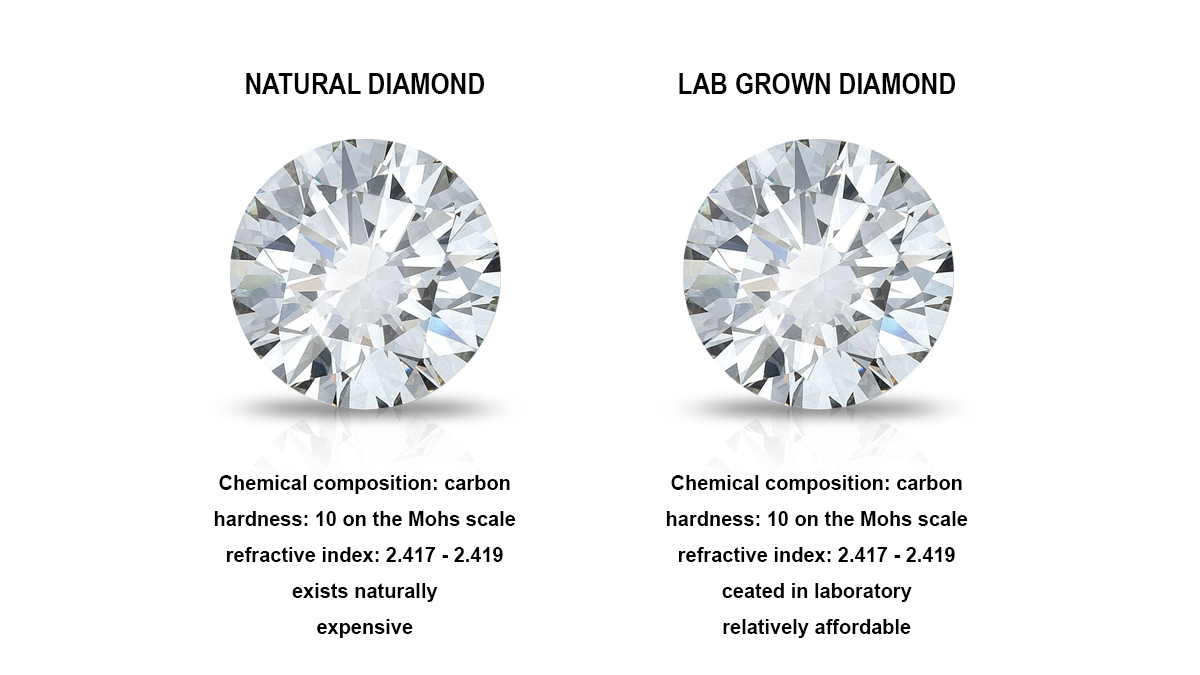Lab grown diamonds have been the subject of much debate. We are here to provide you with facts about them. For centuries, diamonds have been a symbol of strength and durability, they are the toughest minerals on the earth.
Diamonds Are Forever.... As an old saying goes and that is quite right. They are coveted not only for their brilliant radiance, but also for their strength.
Laboratory grown diamonds are real and have the same properties as diamonds found in the Earth's mantle. These properties include clarity, sparkle, and aesthetics. All of this is achieved under extreme pressure and temperature. They are then carried to the surface by volcanic eruptions or other geological events.
Lab created diamonds can be created using two main methods: HPHT (high pressure high temperature) and CVD (chemical vapor deposition). You can't tell the difference between diamonds made by CVD and diamonds made by HPHT just by looking at them. A new question has arisen, however; are lab grown diamonds as strong as natural diamonds? Let's start with what makes a diamond strong.
What Makes a Diamond Strong?
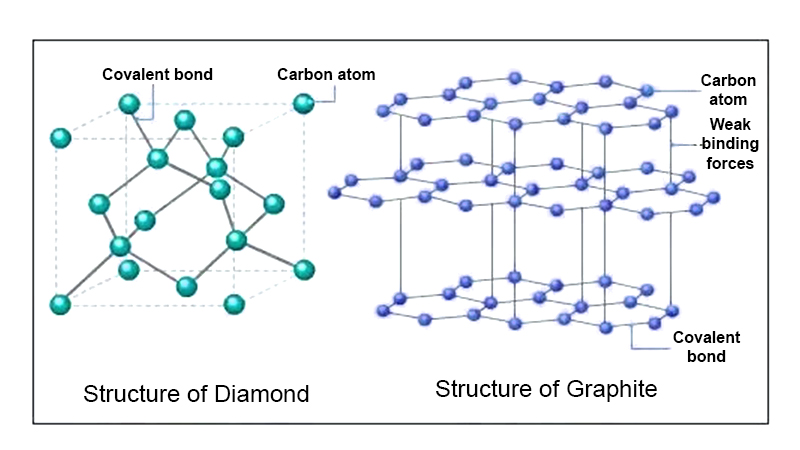
Diamonds are composed of pure carbon that has been arranged in a lattice structure to form a diamond. Diamonds have an exceptional hardness. This is due to the structure of carbon atoms, which are linked to each other.
This makes diamonds the hardest minerals on Earth. Each carbon atom shares electrons with four other carbon atoms, resulting in the formation of a tetrahedral unit. This tetrahedral bonding of five carbon atoms creates a molecule that is extremely strong.
In fact, the only thing that a diamond can scratch is another diamond. Diamonds are made from carbon. This carbon has been under extreme pressure and heat. These conditions are found in depths of 87 to 120 miles below the earth's mantle.
Diamonds graded have a mineral hardness rating of 10 on the Mohs scale. This scale characterizes the scratch resistance of various minerals. It does so by measuring the ability of a harder material to scratch a softer material.
However, diamonds grown in a lab and mined diamonds are relatively scratch resistant. Diamonds can experience chipping when subjected to a hard blow. For example, if a diamond is dropped from a great height or thrown from a great distance, it can chip.
Friedrich Mohs, a German geologist and mineralogist, introduced the Mohs scale of mineral hardness in 1812. Lab grown diamonds are also known as man-made, lab-created, and synthetic diamonds. They are made in a laboratory using advanced technology.
This technology replicates the same conditions natural diamonds form under. A small diamond seed is exposed to extreme pressure and heat. This transforms the carbon atoms, making them link together and grow into a bigger diamond crystal.
Do Lab-grown Diamonds Have the Same Strength as Natural Diamonds?
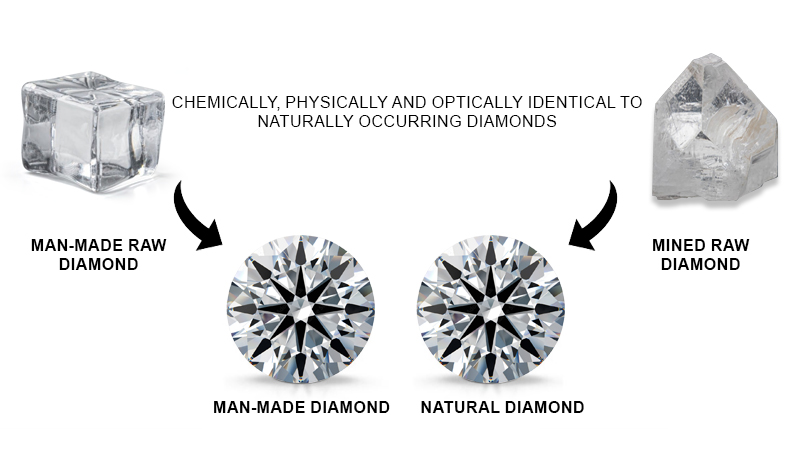
The quick answer is yes. Lab grown diamonds have the same crystal structure and chemical composition as naturally mined diamonds. Therefore, they are equally hard and durable. In fact, because they are grown in a controlled environment with no impurities, lab grown diamonds are purer than natural diamonds.
It is important to note that a diamond's strength is determined by factors other than its hardness. It is also influenced by the quality of its cut, color and how it is set in jewelry. A poorly cut diamond, whether natural or laboratory grown, is more prone to chips and cracks.
There are a few factors to consider when deciding between natural and lab-grown diamonds. Natural diamonds are extracted from the earth's mantle, which has the potential to affect the environment, ecosystem destruction and human rights.
On the other hand, man made diamonds are produced in a more environmentally friendly and ethical manner. Synthetic diamonds are more affordable than natural diamonds. This makes them a desirable option for diamond engagement rings and other diamond jewelry.
Do laboratory-created diamonds resemble Moissanite or Cubic Zirconia in any way?
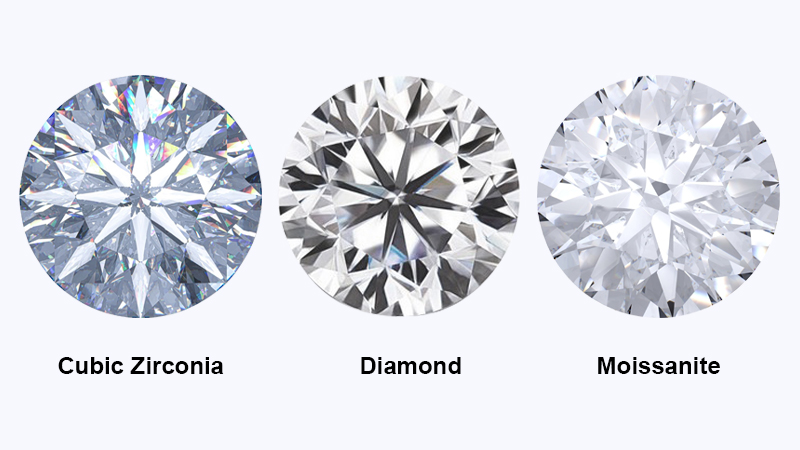
Diamond simulants include cubic zirconia and moissanite. This implies that, while they have the same clear colour as a diamond, they are not the same chemical substance. Moissanite has become increasingly popular in recent years, but it is not the same as a lab-created diamond. Moissanite is created from meteors, in contrast to natural diamonds, which come from the earth.
Moissanite has a unique quality. It is doubly refractive, causing a brilliant display of rainbow colors. This makes it stand out from diamonds. Although some people may enjoy the luminescence of moissanite, it does not have the same authenticity as a real diamond.
Similarly, cubic zirconia (CZ) is not the same as lab grown diamond. Cubic zirconia is a synthetic diamond that is frequently used as a diamond stimulant. A laboratory-created diamond is acknowledged as a genuine diamond because it has the exact same carbon chemical structure.
Lab grown diamonds are created in a laboratory that replicates the environment of the Earth's mantle. The process of creating a diamond is much faster than natural diamond formation. It produces a diamond that is identical to a natural diamond in every way, including chemically, physically, and optically.
It is essential to understand the distinctions between moissanite, cubic zirconia, and lab grown diamonds when shopping for a diamond. Knowing these differences will help you make an informed decision.
Conclusion
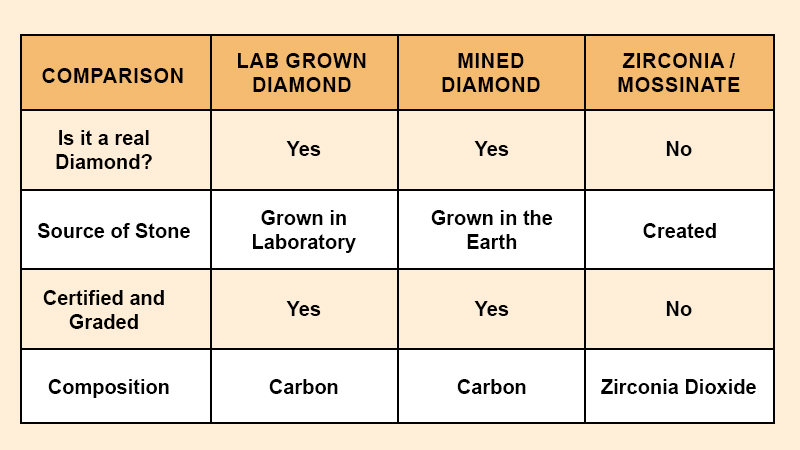
Finally, lab grown diamonds are as strong as natural diamonds. Lab grown and mined diamonds have the same chemical and physical properties as well as being scratch and chip resistant. Diamonds may chip if their carbon atoms are not tightly bonded during their formation. This can cause certain areas of the diamond to be weaker.
Natural diamonds have been the traditional choice for jewelry. Lab grown diamonds offer an ethical and cost-effective option without compromising quality or durability. Lab grown diamonds are less expensive, free of mining concerns, conflict-free, long-lasting, brilliant, and luxurious. It is up to you to choose which option is best, but both options are equally strong and beautiful.

